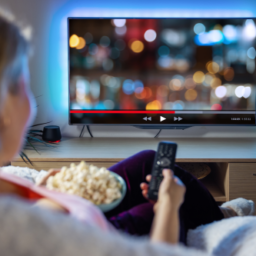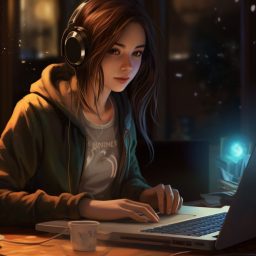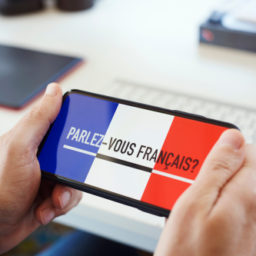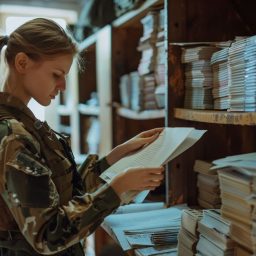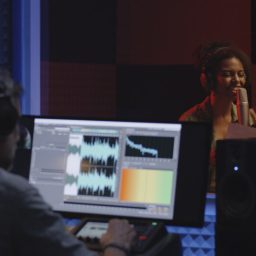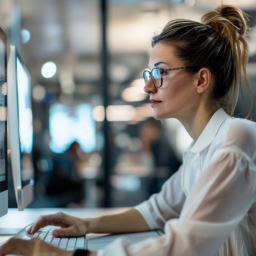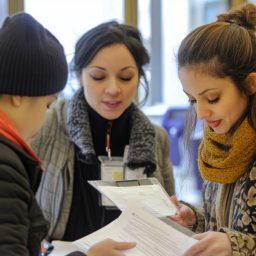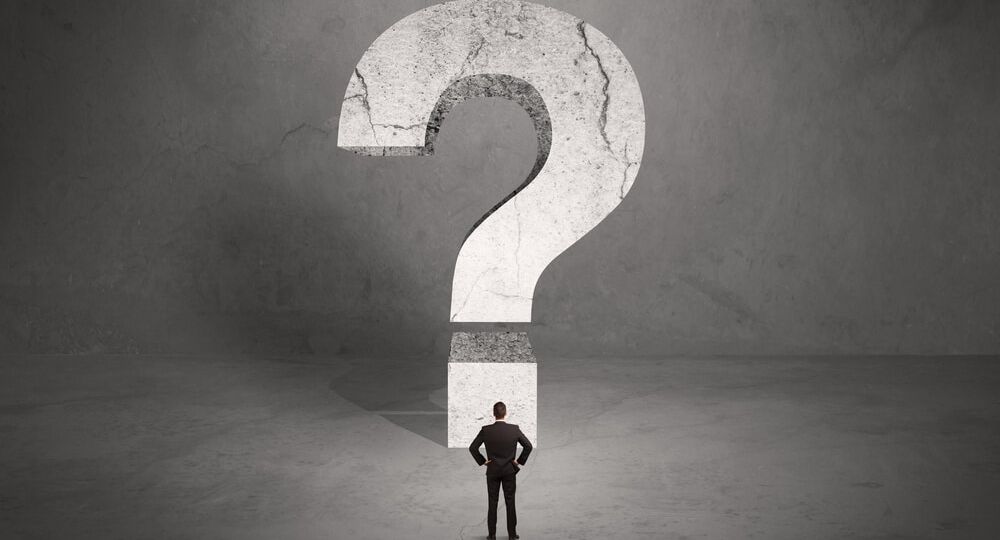
Is it you, the AI system owner, or maybe nobody?
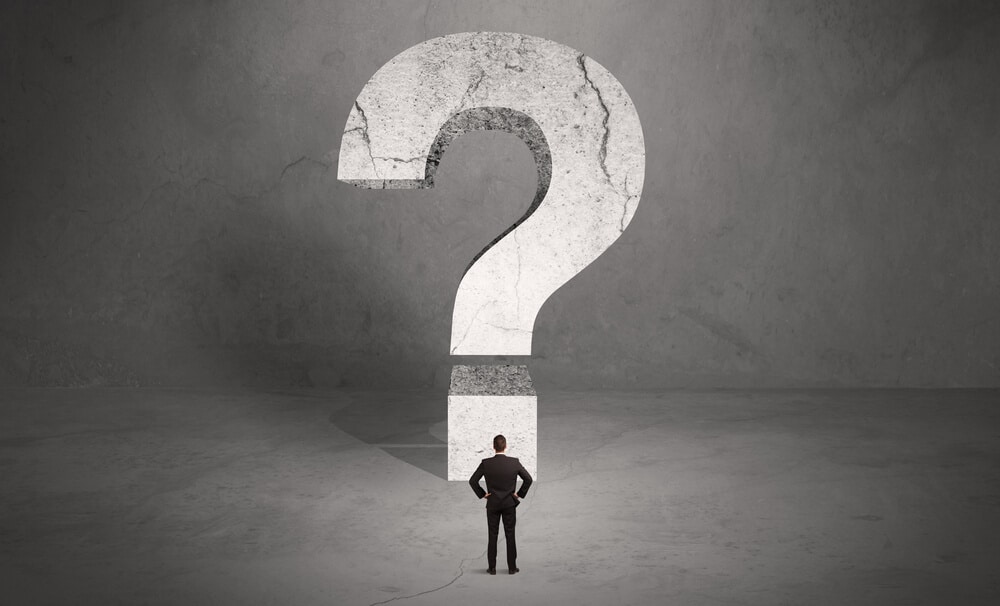
Contents
Introduction
With the rise of AI generated works in all manners of what we would traditionally refer to as art, there are a lot of new challenges for businesses and professionals who engage with intellectual property on a daily basis. Graphical design, pictures both photorealistic and stylised, text-based works both factual or in the realm of fiction, even poems can be generated via specialised or generalist applications available for the public online. While everyone, including us in Skrivanek, is excited about the prospect of endless possibilities afforded by this new technology, the law, as usual, is not entirely up to date on this issue. This has serious consequences especially for businesses or freelancers that would like to use AI generated content in their professional activity as well as for regular users who are interested in sharing the content they created. Or generated? Prompted the AI to create or generate?
So, what is the problem? The user gives the AI a prompt of what more or less to generate and the AI generates that “thing”. The user then takes it and does whatever they like with it, no? Well, it’s not that simple. Nothing is when the law gets involved. Traditional art – books, paintings, music, but also more contemporary expressions like photographs or computer programs are protected by copyright. The concept of copyright (at least proprietary or material copyright, moral or personal rights are a completely separate topic, which we might delve into in a separate article) entails a certain exclusive “right” to use or dispose of works of art and derive benefits from such use or disposal. This right, barring some specific exceptions, relevant ones to be discussed presently, reside with the author of a given work. These rights may however be granted to others by said author in whole or in part – which in legalese, we commonly refer to as licensing; or may also be transferred entirely onto someone, whereby the author “loses” their rights by giving them away to someone (usually for a fee or as part of an employment arrangement).
With the above in mind, the problem seems to be deceptively simple. We just have to ascertain who the “author” of an AI generated piece of art is and we’re done. Case closed. That would tell us with whom the copyright resides at the moment of the work’s creation and allow us to trace any transfers thereof if and as they happen to see if any given instance of using such work is legal or unlawful and if there are any claims to be raised by anyone involved.
The “work of art” and copyrightability
This however proves to be a lot more of a complex issue in practice. It is generally acceptable in intellectual property regulations and legal doctrine that in order for a given work be considered copyrightable, it needs to meet a few requirements. It varies slightly from jurisdiction to jurisdiction of course, but the basic principles are similar enough. “The subject matter of copyright is each individual creative work, embodied in any form, regardless of its value, designation, or medium of expression (work).” – as defined by the Polish act on Copyright and Related Rights from 4th February 1994 in particular.
The most operative words in that definition, for our purposes, being “individual” and “creative”. Creative in this context basically means more or less the same as “original” or “new”, which wouldn’t in of itself pose that big of a challenge. Individual however is a bit more problematic. It is commonly interpreted to mean something intrinsically linked with the individual character of the author. It is traditionally strongly associated with the author’s humanity, their personality and individual characteristics that cause the work created by that person in particular to be different from works of other authors – even if the themes or broad concepts of both works are the same. Due to this requirement of individuality, it is also commonly accepted that only natural persons can be “authors” and only they can be the original holders of copyrights to any works created by them – with the important caveat however that such rights can be transferred “immediately” onto a third party (such as an employer, when an employee creates something during and in connection with their employment). This is how legal persons such as corporations commonly come to hold copyrights to their IPs in the first place.
To round up the definition, there is one more important piece of information that needs to be taken into consideration – namely what is not considered to be copyrightable. Again, to cite Polish legislation “Protection shall only apply to the medium of expression; protection shall not extend to discoveries, ideas, procedures, methods and principles of operation or mathematical concepts.”. A similar version of the same rule can be found in other jurisdictions as well (e.g., Section 102(b) of the Copyright Act in the US).
The different possibilities
Having the theory behind us, let’s see what it all means in practice and in the context of AI generated works. The matter is not settled yet, in the sense that there aren’t regulations that would specifically address the legal status of those creations and the copyright thereto. There are however some strong opinions on how it “should work” based on the laws that currently are on the books.
Firstly – the most user-friendly interpretation. Whereby the AI application should be treated as any other tool one would use to create a work of art. The AI is be considered basically no more than a painter’s brush or a writer’s pen in this context. The user, who prompts the AI to generate something would then hold the copyright to the work created thereby as the provider of the idea or concept, which lays at the foundation of the work.
This approach is of course extremely beneficial for the users. If someone used an application such as Midjourney, Smashinglogo, or ChatGPT to generate content, they could then fully “own” the rights to it, monetise it and raise claims against any other person using it without their permission. Tech companies, who produce these applications or owners of the websites making them available would be limited in their business model options there, especially considering that some jurisdictions (Polish included, but it’s a far less universal rule than what was discussed previously) limit the forms in which a total transfer or exclusive license to use copyrights can be granted – in Poland for example a written form (with handwritten signatures or certified electronic signature) is required. Any Terms and Conditions that stipulate otherwise would be invalid if entered into only based on a simple confirmation checkbox on the website.
There is a big issue though. As alluded to before, the prompt given by the user of the application, for all intents and purposes is just a general idea or concept. Or in other words – it is something expressly excluded from copyrightability in most jurisdictions. Seeing how nothing else of the user’s individual character is a part of the final creation, as the “form of expression” is done entirely by the AI it, is very difficult to subscribe to this interpretation, once the rules governing copyrightability are understood. The prompt itself may be copyrightable, if it’s individual and creative and thereby owned by the user. But the AI generated end product? It seems that there are more serious arguments to be had against that than for.
Secondly – the ownership or work for hire theory. This approach has two main facets, which in the end come to the same practical conclusion. The main idea behind this theory is that, in one way or another, the copyright to a piece of content generated by an AI application would lie with the owner or creator (as the case may be) of the application. The distinction would be important for legal theory (whether the rights are created on the side of the current owner or on the side of the developer) but less so in practice. In practice employees of tech companies or freelancers “write the code” required for the AI application to function and under their employment transfer the right to that code or other elements of the app to their principal either explicitly based on contractual provisions or within the confines of the work for hire doctrine, depending on the jurisdiction. In practical terms, the rights to any content generated by the AI, if rights thereto would be created on the side of the actual developers (code writers) – as something of an extension of their creative work on the application itself, they would also, on the same grounds, be transferred further onto their employer.
Whether transferred as above or not, such copyrights would not lie with the user of the application and therefore, without some kind of a binding agreement between the custodian of these rights and the user, who gave the prompt – the user would not be allowed to use the works outside of specific cases, where fair use could be demonstrated in accordance with IP laws in the jurisdiction relevant to the case. The capability to share and monetise or otherwise make use of works so created in a professional or business capacity would be severely limited for example. On the other hand, the opportunities for providers of such AI solutions to introduce and enforce limitations on their use or various paywalls would be practically endless.
As with the first interpretation though, there is a big problem. It comes back to the “individuality” issue signalled before. It is difficult to argue, that the creations of an AI carry within them the individual mark of the algorithm’s creator. Firstly, the application’s creator has no input in the creation of any given piece of content. There is no conscious effort on their side and no actual involvement in the creative. The developer doesn’t even have a full idea or understanding what kinds of works, in particular, will be created by the AI they are working on at the time. The generation of content is based on the collection, compression and analysis of information and/or parts of other previously published works by the AI and whatever it can learn from this process. There is precious little in the way of individual or personal mark left on these works by the creator of the algorithm, so placing copyrights with them is highly questionable.
Thirdly – the public domain theory. This interpretation actually has three separate angles or arguments supporting it. To begin with, there is the argument that the process of generating these works is heavily based around collecting and blending other works and data, published earlier both already a part of the public domain (this is also part of the process of how we created Skrivanek NMT years ago by using bilingual and monolingual data sets available for public use) or attributable to other authors (which mostly are neither willing, nor in most cases knowing of this process), as a sort of derivative work of these. Since tracking down the exact sources where the data or parts of the generated work come from would not be practically possible, there is something to be said for just not attributing copyrights to anyone. As a derivation of a mixture of public domain works and fragments of works copyrighted by countless other authors, AI generated content would sidestep the issue entirely and just enter the public domain immediately upon creation and no copyrights would be associated with it.
Another argument for this theory is based on a contrario reasoning to the previous two. If the user, who prompts the application only provides an idea or concept, which in itself is not copyrightable and the AI algorithm is autonomous enough to where individuality of its developer transpiring in the application’s creations is not substantial enough to pin them as the author… Then the uncomfortable truth would be that copyright protection is just not adequate for AI generated content. The AI does the “creating” – because creation obviously takes place, whereas none of the actual people involved in the process could be ascribed with authorship and eligible for copyright protection. The AI on the other hand cannot be the author or holder of copyrights in its own name – because it has no legal capacity, nor is it human in the sense required by the IP doctrines’ interpretation of the individuality necessary for something to be considered a copyrightable piece of art in the first place.
If the previous arguments were not enough, there is another. The processes of machine learning, which lie at the base of AI content generation lead to quite a substantial similarity and repeatability of the works which come out of any given version of the AI application. This in turns raises doubts if such works have the required creativity to be considered copyrightable, as discussed in the beginning. Of course, this debate is no different from discussions between lawyers, concerning the copyrightability of less fanciful works such as technical documentation or functional designs, which leave very little creative freedom to the designer; already being had for decades. It is however a compelling point to be taken into account when considering the issue of copyrights to AI generated works and their potential holder.
This interpretation has one big upside in that it neatly “deals” with the legal conundrum of who should be entitled to these works and to any fruits associated therewith, even if the answer it provides is an anticlimactic nobody. It isn’t perfect however. One big problem it logically invites is that once we assert that the AI (an entity with no legal capacity and neither theoretical nor practical means to bear responsibility) is the creator of the generated works – who takes responsibility for any unlawful contents therein and what recourse would there be for any parties injured thereby? Such questions are only adjacent to the matter at hand, but will require answers – probably at very short notice.
Examples from the market
The fact that regulations are not yet in place, does not prevent businesses in the tech world from providing AI based solutions and services online. There are quite a few and what is interesting in the context of this article is how they see the ownership of creations generated with the tools they provide. I would strongly encourage everyone, who uses such AI generators, to study the terms and conditions of their providers. It’s advisable to do that with any online service provider, but in this case it could also be interesting.
The two examples I’d like to bring attention to are the popular ChatGPT and Midjourney applications. The terms and conditions of the first one stipulate that the Input (user prompts) and all associated rights shall be owned by the user (no surprises here) and the Output (what the AI generates) along with the rights, title and interest in it is assigned to the user automatically – along with any and all responsibility for that content. The outcome is in practice following the first discussed interpretation in all but name, as there is that safety net of an assignment taking place in the wording of the document. On the other hand Midjourney’s terms and conditions make it very clear that the service provider is the beneficial owner of all the Assets created by its users and, depending on the type of membership purchased by the user, a different set of rights is awarded to them – free users only gain a limited license for non-commercial use of the content, regular paid members are described as owners of the Assets (presumably an assignment takes place, even though that wording isn’t used, but it logically follows from the fact that other types of members are withheld this right) and individuals acting on behalf of big enough companies need to purchase an extended “Pro” membership to be granted rights to created Assets.
Final comments
If someone were to ask me personally to come up with regulations on the issue at hand, I would probably submit to the last presented theory – AI generated content would not copyrightable at all. The arguments presented above speak to my legal sensibilities. It could be seen as reductive, but it is very practical and solves the issue of copyright protection for a soon to be insanely large amounts of automatically generated homogenous content, whose “creativity” and “individuality” are both questionable. The problem of moral or personal copyrights, which are unalienable in most jurisdictions is also solved in this approach (they are not created). This interpretation also doesn’t preclude businesses from conducting their day to day with the use of AI applications. Providing a certain service for a fee is still possible regardless of whether the product of these services is copyrightable or not.
And what are your thoughts on who owns the copyrights to AI-generated content?
Translating the world of business is our focus for over 30 years.
Respectfully Yours,
Arturs @Skrivanek
*None of this is of course to be taken as legal advice. Legal advice requires an in-depth study of the factual merits of any given case or issue. If you have questions regarding such particular case, please as always – consult your lawyer.
Here at Skrivanek, we are bringing together top-notch technologies, culture, and subject matter experts. Please feel free to reach us if we can help you.

